Skip Talbot
EF5
While chasing its easy to miss stuff as your fixated on one thing. I'm always amazed at how I pull new stuff out of my video each time I watch it, including things I never knew were there at the time. I got a lot out of the dissecting the Bowdle supercell, and Bowdle tornado threads, and thought it might be a good idea to do the same with the June 17, 2010 storms. It helps a lot labeling things and trying to visualize the processes when reviewing pictures and video, and others might get something out of this or have their own observations or critiques.
The following are frame grabs from my video of the Albert Lea area storms:
...and here's a level 2 radar animation with GPS track:
What first struck me about this storm were the dueling mesocyclones. I'm used to thinking of a cyclical supercell as having one meso occlude while the new one is spinning up and you can get some overlap there with simultaneous tornadoes before the old circulation finally dies and the new one takes over. This storm, however, was maintaining both mesos at the same time, each putting down multiple tornadoes:
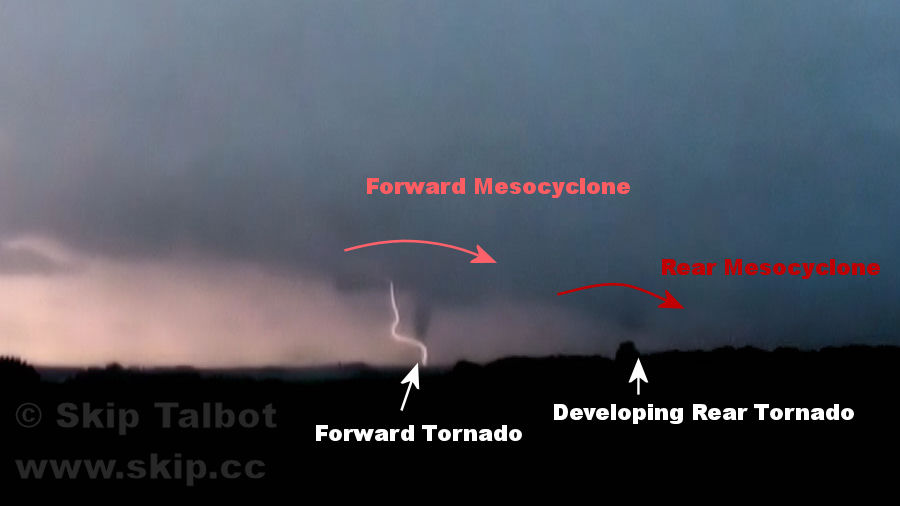
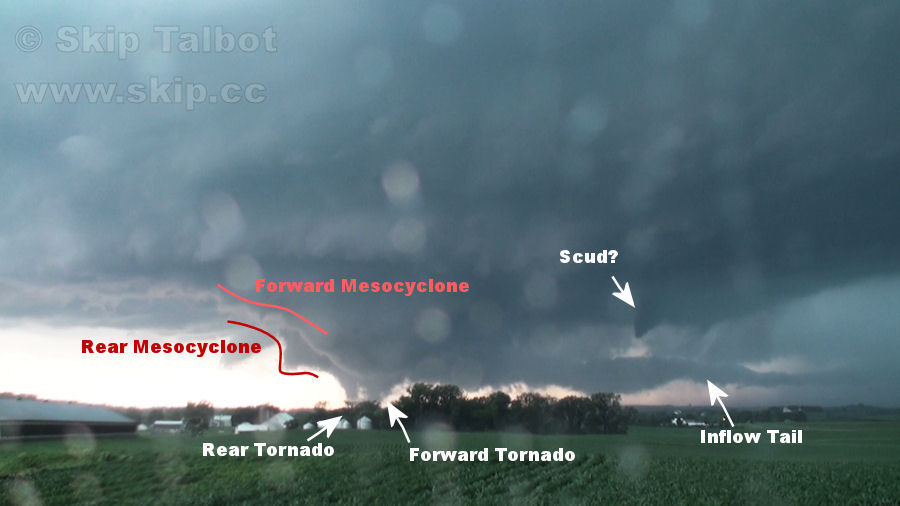
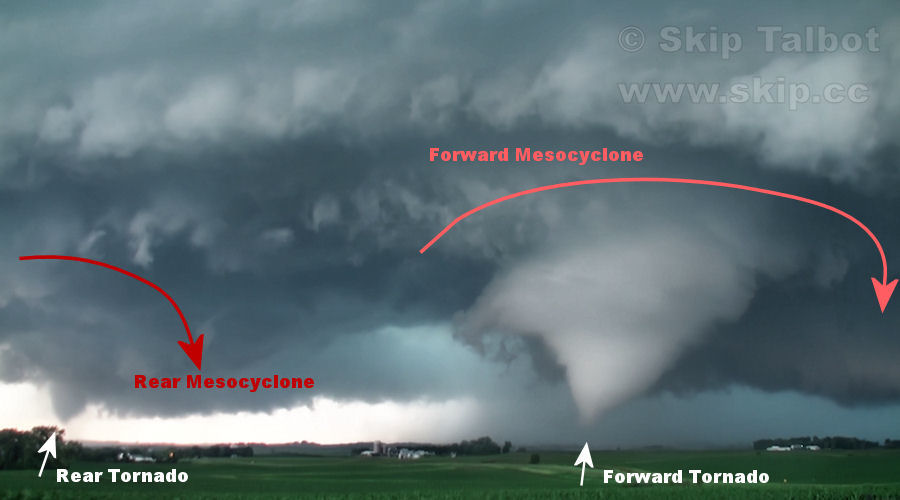
A great example of missing things is the middle image. Danny Neal and I thought the two areas of condensation were suction vortices of the same tornado on the rear mesocyclone. However, after watching video from other angles and looking more closely, we discovered that this was actually a separate tornado under the forward mesocyclone. Looking head on here the two appear right next to each other but there is probably almost a mile between them.
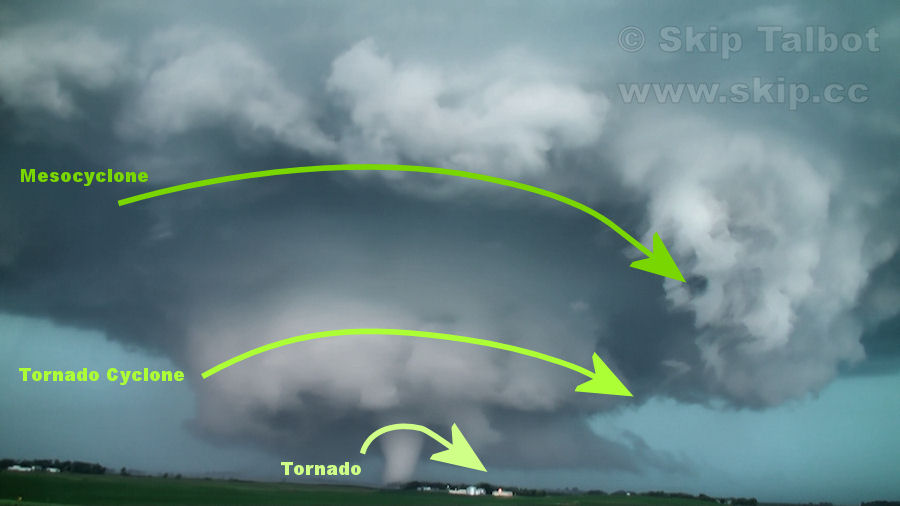
I just love the structure in this shot. Never had I seen three levels of increasingly tight rotation so plainly demonstrated.
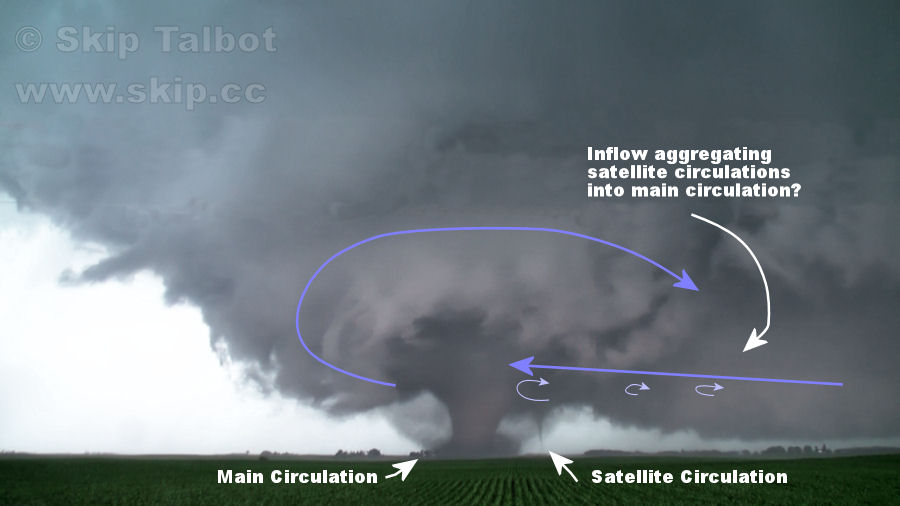
Here's an attempt to make sense of some of the satellite tornadoes we were seeing. We saw several funnels on that forward inflow portion of the storm. The circulations appeared to orbit the main circulation before being ingested. It makes me wonder if there was a ton of vorticity feeding into this storm, spinning up satellites, and then aggregating into the main circulation.
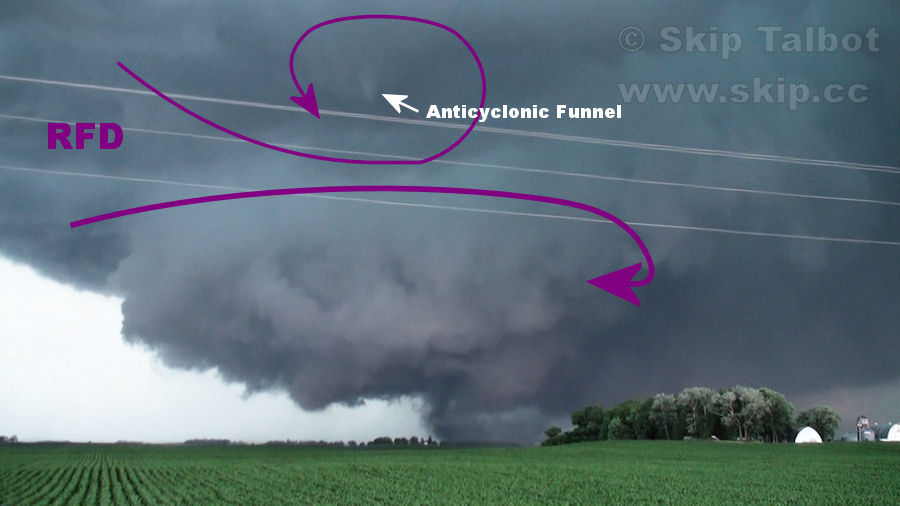
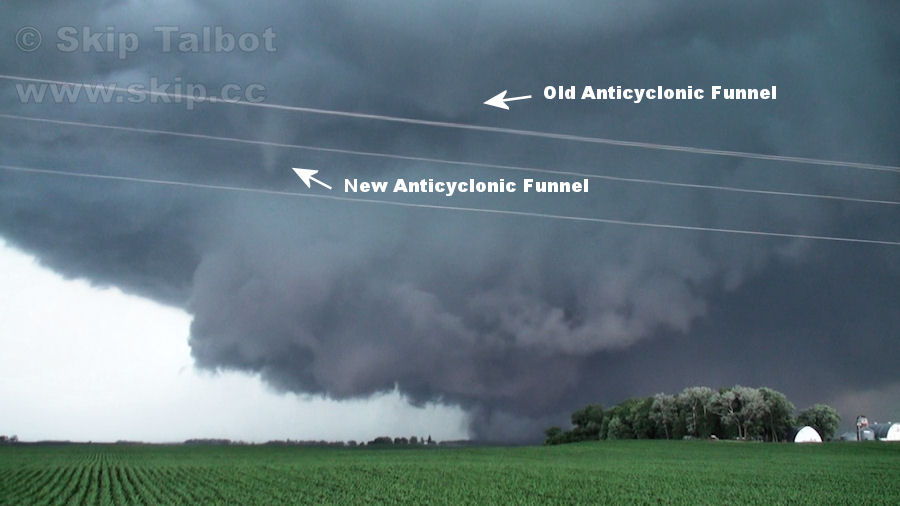
This is something I completely missed until a youtuber brought it to my attention. It appears that the RFD is acting like a mini bow echo here with the southern book-end-vortex portion of the gust front kicking up anticyclonic funnels. In the video you can see a couple of them spin up in rapid succession. What's even more interesting is Adam Lucio's view of the storm at this time. At right about the moment these funnels are occurring, Adam was hit by very strong, rapidly shifting winds. His position lines up pretty closely these funnels as he was between me and the tornado at the time of this frame grab. Despite how high these funnels were, it makes me wonder if we actually had an anticyclonic tornado and that Adam found himself inside of it.
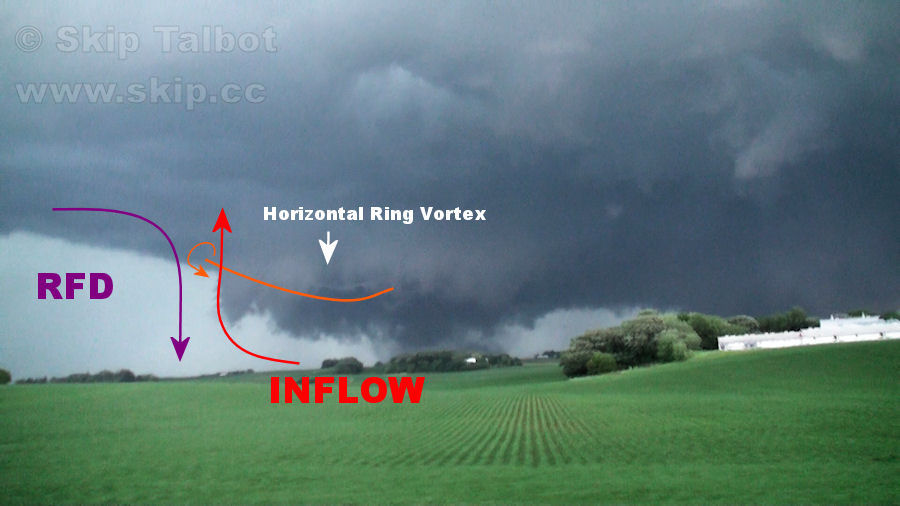
Here's another really neat feature I didn't see until after reviewing the video. You can see it much better in Adam's video as he was closer, but there is a horizontal ring vortex here, circling the wall cloud and descending. I drew some lines here to try and visualize the winds that might be responsible, speculating its generated by horizontal vorticity between descending and rising air.
Anyway, I found it fascinating going over these details and thought I'd share it here and see if there were any other insights, alternate ideas, or if people had their observations from this day.
The following are frame grabs from my video of the Albert Lea area storms:
...and here's a level 2 radar animation with GPS track:
What first struck me about this storm were the dueling mesocyclones. I'm used to thinking of a cyclical supercell as having one meso occlude while the new one is spinning up and you can get some overlap there with simultaneous tornadoes before the old circulation finally dies and the new one takes over. This storm, however, was maintaining both mesos at the same time, each putting down multiple tornadoes:



A great example of missing things is the middle image. Danny Neal and I thought the two areas of condensation were suction vortices of the same tornado on the rear mesocyclone. However, after watching video from other angles and looking more closely, we discovered that this was actually a separate tornado under the forward mesocyclone. Looking head on here the two appear right next to each other but there is probably almost a mile between them.

I just love the structure in this shot. Never had I seen three levels of increasingly tight rotation so plainly demonstrated.

Here's an attempt to make sense of some of the satellite tornadoes we were seeing. We saw several funnels on that forward inflow portion of the storm. The circulations appeared to orbit the main circulation before being ingested. It makes me wonder if there was a ton of vorticity feeding into this storm, spinning up satellites, and then aggregating into the main circulation.


This is something I completely missed until a youtuber brought it to my attention. It appears that the RFD is acting like a mini bow echo here with the southern book-end-vortex portion of the gust front kicking up anticyclonic funnels. In the video you can see a couple of them spin up in rapid succession. What's even more interesting is Adam Lucio's view of the storm at this time. At right about the moment these funnels are occurring, Adam was hit by very strong, rapidly shifting winds. His position lines up pretty closely these funnels as he was between me and the tornado at the time of this frame grab. Despite how high these funnels were, it makes me wonder if we actually had an anticyclonic tornado and that Adam found himself inside of it.

Here's another really neat feature I didn't see until after reviewing the video. You can see it much better in Adam's video as he was closer, but there is a horizontal ring vortex here, circling the wall cloud and descending. I drew some lines here to try and visualize the winds that might be responsible, speculating its generated by horizontal vorticity between descending and rising air.
Anyway, I found it fascinating going over these details and thought I'd share it here and see if there were any other insights, alternate ideas, or if people had their observations from this day.






















